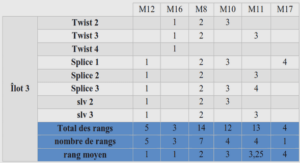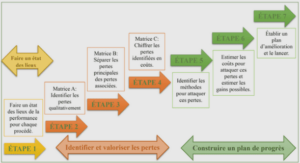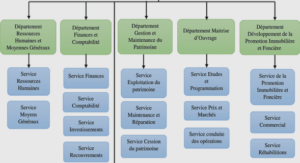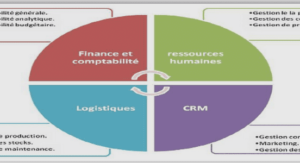Mainstream Economics and Biophysical economics
Economy was first defined in the Ancient Greece by Xenophon in Oeconomicus as an art of household management (Raworth, 2017). To comprehend this system, Economy has evolved into a science under the term ‘Economics’, or the science of economy, and gained attention mostly after the 19th century. In fact, the economy, consisting of people, machines, and natural resources, is one of the most complex systems that science has been trying to understand. In modern times, Economics has taken a central place in our society. Lord Keynes even said that “ideas of economists and political philosophers, both when they are right and when they are wrong, are more powerful than it is commonly understood. Indeed, the world is ruled by little else. Practical men, who believe themselves to be quite exempt from any intellectual influences, are usually the slaves of some defunct economist.” (Keynes, 1936, pp.386). Therefore, the following part of this thesis is dedicated on economics.
Economics is now commonly defined as “the science which studies human behavior as a relationship between ends and scarce means which have alternative uses” (Robbins, 1969- pp16). Economics today is mainly applied according to the neoclassical school, which is rooted in Keynesian economics with influences from diverse schools such as the Austrian School of Friedrich Hayek. Economics has been concentrated on social issues with the idea to focus on “deriving maximum well-being, as defined subjectively by each individual, and the resources available to each individual” (Hall & Klitgaard, 2018 – pp.6).
The following discussions on economics is dedicated to a summary of the tenants of neoclassical economics and the critique raised by biophysical economics. Biophysical economics attempts to reform economics without discarding all of what neoclassical economics states; it aims only at providing a more comprehensive view on the interactions between the natural world and the economy. Therefore, while the following discussion has neither the ambition nor the objective to deeply critique mainstream economics, it will underline key critiques raised by biophysical economics. Biophysical economics, which is separated from ecological economics, is a relatively new school of thoughts that can be retraced to the physiocrats (François Quesnay, 18th century), who maintained that economic value derives from land and its uses (Hall & Klitgaard). Consequently, this thesis (1) highlights essential criteria that defines neoclassical economics, (2) summaries key critiques raised by biophysical economics, and (3) details a major argument which is the link between entropy and economics.
Mainstream Economics
Mainstream economics is dedicated to the analysis of individuals, which are presumed selfinterested, rational, and independent from each other (Cochet, 2015). Simply, these individuals form a system of two entities: (1) Households, which sell or rent lands, labor, natural resources, and capital to firms in exchange forsomething; (2) Firms, which combine factors of production in order to produce goods and services in return for something (Hall & Klitgaard, 2018). Consequently, there are two markets. The first is dedicated to the exchange of goods and services and is called the product market; the second is the factor market in which factors of production are exchanged (Hall & Klitgaard, 2018). On both markets, the interaction of supply and demand determines simultaneously equilibrium levels of price and quantity, which is said efficient and fair (Hall & Klitgaard, 2018). This mechanist view of economics led Stanley Jevons to define economics as “the mechanics of utility and self-interest” (Jevons, 1879, pp23).
Two fundamental points should be raised. First, if optimality within the market is not met, interventions from the institutions are applied to the market to achieved economic equilibrium; in other words, to get the right price (Ruth, 2011). Instruments for interventions range from the imposition of taxes to monopoly deregulation. Second, according to hereinabove theory, things of value to people have a price, and things that lack value are not included in the market (Hall & Klitgaard, 2018). Well understood by economics, this system gives rise to externalities, which refer to a gain and more generally a loss associated with a market transformation (Hall & Klitgaard, 2018). For example, pollution of fine particles within urban areas is an externality of economic activities. In this vein, concerning the environment, a subdiscipline of neoclassical economics is dedicated to the study of reducing negative environmental externalities using market interventions. The discipline is named ‘environmental economics’. This discipline studies interventions such as carbon taxes to reduce environmental damages from economic activities. Another aspect of economics is the study of economic growth. Economic growth may be defined as “an increase in the production of goods and services in an economy” (Chappelow, 2019). According to the values of goods and services exchanged, in real terms, one can calculate the Gross Domestic Product (GDP). Comparison of GDP along the years, commonly defines the economic growth (Chappelow, 2019). Economic growth is an economic phenomenon that has been heavily studied and stays at the heart of economics. Based on the Cobb-Douglas function, one common view of neoclassical economics, raised by Solow in 1956, is to explain economic growth by the continuing advancement of the technical progress.
Critiques from Biophysical Economics
While biophysical economics is a relatively new discipline and is not at an affirmed theoretical and practical stage, it raises essential issues on mainstream economics (Cochet, 2015). This economics school is mainly derived from the work of Nicholas Georgescu-Roegen with his studies of thermodynamic applied to economics and from Howard T.Odum with his work on ecological systems in the 70s. The key message from biophysical economics is that economics have to balance social science with physical science by integrating stock and flow of matter and energy within the economic system (Cochet, 2015). Indeed, Hall & Klitgaard (2018, pp.68) raised that neoclassical economics (NCE) « does not recognize or reflect the fact that economic activity requires the inputs and services of a finite biophysical world which is usually diminished and degraded by that activity”. Thus, major critiques of (1) derecognition of the biophysical matrix and (2) the need to refer to physical work will be studied.
On the one hand, biophysical economics’ main critique is that mainstream economics does not include the biophysical matrix, in terms of laws and boundaries. Concerning laws, the NCE system depicted previously can be compared to a perpetual motion machine, without energy inputs nor entropic loss (Hall & Klitgaard, 2018). According to the laws of thermodynamics such machine cannot exist. There is a need for inputs; indeed, the economy associated with the human superorganism ‘eats’ exergy and resources. Consequently, Georgescu-Roegen’s student, Hermann Daly (1977), criticized the conceptual model of the economic process by underlining that the circular flow of exchange value is coupled with a physical flow of matterenergy which is not circular. In the same vein, Ayres (1978) described as inconstant the closed, cyclic standard economic model; using a material-energy balance model, he emphasized that low-entropy matter and energy were entering the economic process and ultimately left it as high-entropy waste (Cleveland, 1999). Another similar approach was raised by Kümmel (2016) with its capital-labor-energy-creativity model (KLEC). An illustration to the importance of the biophysical matrix, and especially energy, for the economy is given by Rifkin (1980 – pp.123) that raises the argument that “inflation is tied directly to the depletion of our nonrenewable energy base”. Verifying this statement, a study from the European Central Bank (ECB), in 2008, shows that 0,9 percentage point of the 2% inflation rate was due to energy prices (Rubene, 2018). It is relevant to see the difference between ‘energy prices’, ranged from renewable to nonrenewable sources, of the study from the ECB and the idea of depletion of ‘nonrenewable energy base’ defended by J.Rifkin. In conjunction with these critiques about the mainstream economic model, biophysical economics also criticized the absence of boundaries in the model. While neoclassical speaks about scarcity, the term refers only to relative scarcity rather than absolute scarcity, as materials are taken as substitutable (Hall & Klitgaard, 2018). Biophysical economics establishes that resources are legitimate and are a key topic in economics and that energy, or in fact exergy, is the ultimate resource (Ayres, 2016). For illustrating the dominant importance of exergy, it is interesting to compare conclusions of Barnett, H., and C. Morse (1963) to Cleveland (1991). The first, while affirming a ‘new’ form of resource scarcity due to problems of space and nature preservation, maintain that there was no increasing scarcity of raw materials as determined by their inflation corrected price between 1900 and 1950 in the US. Such conclusion was again supported by Barnett in 1979 and by most economists (Hall & Klitgaard, 2018). On its counterpart, Cleveland (1991) showed that the only reason why there was no increasing scarcity within the same period in the US was explained by the decreasing price of energy; expressly, while there were decreasing concentrations and qualities of resources, the low price of energy has permitted to produce constant quality materials at the same price. Hence, according to biophysical economics, because the second law of thermodynamics maintains that Nature places limits on the amount of energy that can be withdrawn, economists should recognize at least bare boundaries to reflect the physical requirements of any economic activity (Rosa et al. 1988 ; Hall & Klitgaard, 2018).
INTRODUCTION |





